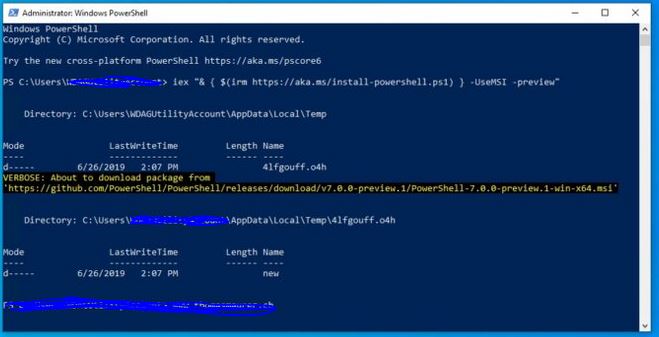
The script supports both remote COM (default) and local COM via PowerShell. # Waiting until an existing Hotfix installation finish. Find Last Installed Update via Windows Update Using Remote COM or PSRemoting. PS C:\> Get-WmiObject -query "Select HotFixID from Win32_QuickFixengineering" | sort-object -Descending -Property HotFixID|% They were deinstalled in order from the highest to the lowest KB Number which increases speed of the remove process(Latest fix first). This command will install recent windows update which is shown by step 2 command.Here is a “oneliner” to uninstall all Windows Update at once. Open your command prompt or powershell and execute this command on it: winget install Microsoft.PowerShell If you have Mircrosoft.PowerShell execute this command: winget upgrade Microsoft.PowerShell For figure out your powershell version: execute host command in your powershell.

Open PowerShell and type the below-mentioned command to start the windows installer service.We can enable the installer service in GUI method, but this post is about PowerShell and installing Windows Update using PowerShell so we enable the windows installer service using PowerShell itself. Check here how to enable the execution policy?īefore installing Windows Update check for the windows installer service is enabled or not. You can start Windows PowerShell with administrative credentials by using the Run as administrator command. Before running the command, you have to check the Execution policy. Let’s create a share on the local server for storing Windows Update logs generated by PowerShell.

Run the below-mentioned command, this command will check for recent updates. HiI am an overambitious tech manager to a small local library.


Right-click the Windows menu at the left button of your screen and select Windows PowerShell (Admin), and click on Yes to confirm it. Switch Closet cleanup gone horrible wrong - phones and two devices not working Networking. Open PowerShell in admin mode, Run below-mentioned command. Here you can install it on Windows 10/11 and Windows Server 2022/2019/2016 via the PowerShell PackageManagement.


 0 kommentar(er)
0 kommentar(er)
